-
Capital:
Amsterdam
-
Currency:
Euro
-
Time zone:
UTC+1 (CET)
-
Driving side:
Right
-
Country calling code:
-
Language(s):
Dutch, English
Netherlands: An Overview
Whether chasing windmills or tiptoeing through tulips, visitors to The Netherlands are ever enchanted by this Dutch region’s signature canals with dancing reflections from the gabled homes alongside. The Netherlands is one of the founding five members of the European Union that signed the Schengen Agreement in 1985. More than 18 million travelers visited last year. The draws are many; an easygoing Dutch culture, colorful famed tulip farms, gentle cities with outdoor cafes along the canals, cycling paths, verdant gardens, great works of Dutch masters like Van Gogh and Golden Age artists, Rembrandt and Vermeer. Visitors can explore by way of a resourceful train network which makes day trips to popular Dutch destinations an easy, welcome experience.
Travel Documents
Your passport must be valid for at least three months beyond your planned date of departure from the Schengen area. You must have at least one blank page for stamps in your passport. If your stay is beyond 90 days, you will need a Travel Visa. If you are a citizen of and ETIAS-eligible country, you will need an approved ETIAS to travel to Netherlands beginning in 2021. Learn more about the application process and sign up for ETIAS alerts to get the latest news.
Be sure to make photo copies of all your travel documents to take with you on your trip. It also makes sense to leave copies with a family member or friend back home.
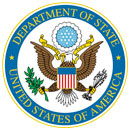
Netherlands : An Overview
John Adams Park 1
2244 BZ Wassenaar The Hague
Phone: +31 70 310-2209
Web site: https://nl.usembassy.gov
Where to Go
-
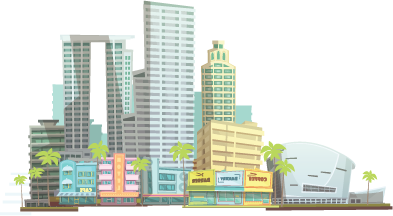
The City
Amsterdam in the 1600s was the world’s wealthiest city. Its spirit is much the same now—gorgeous, 17th century architecture and little bridges crossing clusters of canals. A city of easy living beckons travelers to soak in the rich history, unique food, abundant art, and music. Museums are beyond plentiful— Van Gogh, Hermitage, Netherlands Maritime, Anne Frank House, and Houseboat Museum— your chore will be to decide which to explore. Don’t miss nibbling on a giant sweet Stroopwafel or veal Bitterballen. Stroll the luxury shopping district, or the Red Light District and stop to listen to local street performers. Rotterdam is as new as Amsterdam is historic. Outrageous modern architecture and marvels of engineering, like the Erasmus Bridge and Cube Houses of Rotterdam, render this hip city unique. For foodies the insanely huge indoor market is a delight. Visitors can ride the city’s waterbus for the local fun factor, or head out to tour the Kinderdijk windmills. Bike tours in Rotterdam are also a wonderful way to see the sights. For views from above, ride up to the top of the Euromast tower and behold the views for hundreds of kilometers. City accommodations range from hostel to high end.
-
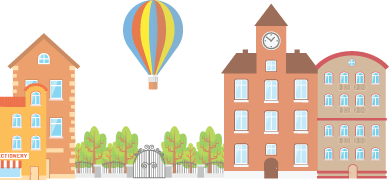
Flower Fields
Just outside Enkhuizen and in the coastal Flevoland Provence visitors delight in acres of flower bulb fields. Perhaps most celebrated are those tucked near the dunes of the North Sea; the Bollenstreek area is located between The Hague, Amsterdam and Leeiden. Self-tours by car or bicycle are a wonderful way to experience the heady magic during spring blooms.
-
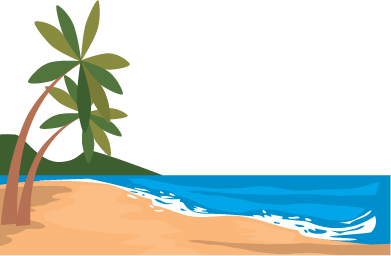
The Dutch Coast and Beaches
A third of the country is located beneath sea level and the western coast is home to some sweet Dutch seaside towns. Due west of Haarlem is Zandvoort aan Zee. The wide beach is framed by a pretty nature preserve, Zuid-Kennemerland National Park, a wonderful place to explore. Texel in the rural Dutch Wadden Islands off the coast of the Netherlands offers dunes, beaches and nature trails through the forest. The beaches of Zeeland are highly popular, and the nearby coastal villages feature a pastiche of lodging options from quaint to quirky to quintessential coastal.
-
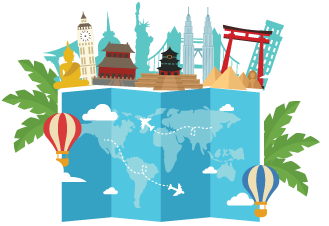
Neighboring Countries
The Netherlands is bordered by Belgium and Germany to the south and east. These three European countries are part of the Schengen Area and will require an ETIAS visa waiver for entry beginning in January of 2021.
Travel Tips
ELECTRICAL OUTLETS AND ADAPTERS FOR US PRODUCTS
Netherlands uses C, & F Plugs. You will need an adapter and maybe a transformer to use products made for the US electrical grid. Netherlands runs on a 230 (220) volts, 50 hertz AC current, while US runs on 120 (110) volts and a frequency of 60 Hz AC current. Many American products are able to run on 230 (220) volts, 50 hertz AC current. You need to check your electrical product to make sure it is labeled "dual voltage" before you plug it in, otherwise you may burn out the components rendering it useless. Learn more about the different European plugs and currents here.
PICKPOCKETS AND THEFT
Nearly all crimes suffered by tourists in Netherlands are nonviolent and avoidable, however you should be prepared for pickpockets. Europe’s transit systems are notorious for pickpockets.
- Being vigilant is your best friend when you are in high theft areas: train stations, trains, city buses, subways and open air shopping areas.
- Store important documents, money and phones in zippered or buttoned pockets, specialized travel day bags or a money belt.
- You should never leave your bags unattended! Make sure you can see them at all times. Better yet, you should keep in physical contact with your bags in public places.
MOBILE PHONES
First, be sure to check that your phone will work in Netherlands. The easiest way to find out is to check with your mobile phone service provider. You can also find out if your service provider offers international plans for Netherlands. We recommend signing up for an international plan if you plan on using your smart phone to connect to the internet or use the travel apps you may have installed on your phone. If you decide not to sign up for an international calling and data plan, costs can add up very quickly!
Free WI-FI can be easy to access, but can be very slow or not available in the countryside. Sign up for a Virtual Private Network (VPN) services to secure your phone, tablet or computer when using public Wi-Fi networks. This prevents hackers from accessing your device when using free Wi-Fi.
EUROPEAN TAXIS, BUSES AND SUBWAYS
- Taxis - A good rule of thumb is use a prominent taxi service, one that has a company logo and a telephone number on the car. Avoid using taxis that just have a taxi light on the top of the car. Make sure the taxi driver is using the correct rate for the time of the day and day of the week. Nighttime and weekends have higher rates. When taking a taxi that has a set fare, for example to a Netherlands airport, make sure you establish the price before you leave.
- Buses and subways - Most European cities have a great public transportation system. The cost of a transit pass for the entire time of your stay can equal the cost of one or two taxi rides. Check out the ticket options that are offered at subway stations, bus terminals and train stations. Get a transit map or download a transit app to your smart phone. Google maps have transit maps for most Netherlands cities.
EXCHANGING CURRENCY IN NETHERLANDS
The most important thing you should understand is how exchange rates work. The Euro usually has a higher exchange rate compared to the US dollar. So if you want to get 100 euros and the exchange rate is $1.10 for one euro, it will cost you 110 dollars to get 100 euros. There are many currency conversion apps you can down load to your smart phone to get up-to-date exchange rates.
Many people like to get Euros through their bank before they leave for their trip. Check out what fees the bank charges for this service. Different banks have different fees. These fees can be expensive, so it pays to shop around.
When in Netherlands avoid using currency exchange companies or booths. These companies can charge up to 15% to 20% of the amount you are exchanging. Netherlands banks can also charge high fees to exchange money. You best bet is to use your ATM card with an established bank to get local currency.
DEBIT CARDS AND ATMS
First, make sure that your ATM card can be used internationally. Second, see what your bank charges for international ATM fees. Third, see what is the maximum amount you can withdraw each day. While there are fees associated with using an ATM card, they are usually much less than the fees charged by Netherlands banks and currency exchange companies. ATM fees are a flat fee not a percentage. So when you are withdrawing money using your ATM card, take out the maximum amount to reduce amount of ATM fees you will incur. Also it is a good idea to use bank ATMs instead of third party ATMs, which can charge higher fees.
CASH VS CREDIT CARDS
Using local cash is key for the European tourist. Some businesses do not accept credit cards and many businesses charge a higher price when using a credit card due to the credit card fee they pay to the credit card company. Many businesses will take US dollars, but then you will need to figure out the exchange rate to ensure you are being charged the correct amount and receiving the correct change. Having smaller bills is better than large bills. Also remember to keep your cash secure in pickpocket proof pockets or a money belt.
US credit cards are widely accepted across Netherlands. Just in case, check with bank to be sure your credit card will work in Netherlands. Before you leave on your trip, sign up for a credit card that has no foreign transaction fees. If you don’t, you may be in for a surprise when you get your credit card statement that contains lots of foreign transactions and currency conversion fees.
It makes sense to use a credit card for hotels, car rentals, Eurail pass, upscale businesses and restaurants. Limit the number of credit cards you take with you. Bring one back up credit card in addition to the main card you intend to use. Be sure to contact your credit card company and let them know the dates you will be traveling abroad.
TIPPING IN NETHERLANDS
Generally speaking, if someone in the service industry provides great service for you, a tip of a couple of euros is acceptable, but not required.
- Restaurants - 5% to 10%, with 10% being for over the top service. Be sure to check to see if service has already been included in the bill
- Taxis - round up to the nearest Euro, for example, if the fare is 5 euro give them 6
- Hotel porters - one euro for every bag
Medical Information
Here’s the good news: most of Europe, including Netherlands, has a universal health care system that takes care of everyone – including foreigners. If you need healthcare due to illness or injury while traveling in Netherlands, you won’t have to worry about getting treated. There will be out-of-pocket costs, but those are generally reimbursable depending on your health insurance.
IMPORTANT HEALTHCARE HINTS
- Pack enough of any prescription medications for the length of your stay, in their labeled, original containers. It is smart to add a few more pills than you need, just in case you stay longer.
- Bring a small first aid kit with over-the-counter necessities.
- In an emergency call 112, that’s the “911” in Europe.
- If you have a non-emergency health issue, go to the nearest pharmacy first. Netherlands pharmacists can actually diagnose and prescribe medications for minor issues like sore throats, sinus and stomach issues and minor aches and pains.
- If the pharmacist can’t help you, go to a clinic. They’re much like our stateside urgent care clinics, and providers can order any tests you might need like x-rays.
- Ask for a House Call. Your hotel will most likely be able to have a physician come to your room if need be.
- Most embassies and consulates have lists of physicians and hospitals in major cities. Go on the U.S. Embassy’s site, choose your destination and look under U.S. Citizens Services section.

